Video of the Week:
Harvesting and Storing Onions
Vegetables:
Vegetables Produce Flowers But No Fruit
Squash, cucumbers, watermelon, and muskmelon can have a couple of other problems. First, the early flowers on these plants are usually all male. The production of both male and female flowers becomes more balanced as time passes. You can easily tell the difference between the two because only the female flower has a tiny fruit behind the blossom. If you have both, have not over-fertilized, and still have a problem, make sure you have pollinators. Look for the presence of bees visiting the plants. If you don't see any, try hand-pollinating several flowers. Use a painter’s brush to transfer pollen from the anther of the male flower to the stigma of the female flower. If you get fruit on only those flowers you pollinated, you need more pollinators. Make sure you aren't killing them with overuse of insecticides.
Tomatoes are wind pollinated and therefore not dependent on pollinators. But they have another possible problem, which is temperature. Tomatoes normally won't set if the night temperature is below 50 due to sparse pollen production. They also won't set when nighttime temperatures are above 75 degrees F and daytime temperatures are above 95 degrees F with dry, hot winds. (Ward Upham)
Fruit:
Strawberry Bed Renewal
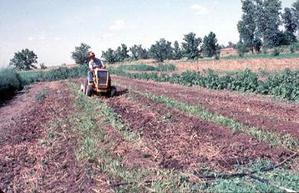
It is also important to reduce the number of strawberry plants so they do not compete for light, moisture and nutrients. If you have a small bed, you can hoe out or pull some plants so they are spaced about 4 to 6 inches apart. On large beds, adjust a rototiller so you can till between the rows, and cut each row back to about 10 inches wide.
The next step is to fertilize the plants with about 3/4 to 1 pound (3 to 4 cups) of a complete fertilizer such as 13-13-13 (nitrogen, phosphorus and potassium) or an equivalent on each 25 feet of row. If a soil test shows adequate levels of phosphorus and potassium, use 3/4 pound (1.5 cups) of a 16-0-0 (nitrate of soda) fertilizer per 25 feet of row instead. If nitrate of soda is unavailable, use the lawn fertilizer that contains about 30% nitrogen such as a 30-0-3, 28-0-3 or something similar. Make sure the lawn fertilizer does not contain a weed killer or preventer. These fertilizers should be used at the rate of 3/4 cup per 25 feet of row.
The next step is to irrigate to wash the fertilizer into the soil and provide moisture for the rapid growth of the strawberry plants. When the soil is dry, apply about 1 inch of water. A garden sprinkler can do a good job applying the water.
Controlling weeds and watering throughout the summer are important so plants are vigorous when fruit buds begin to develop in September and October. (Ward Upham)
Ornamentals:
One Plant, Two Plants, Red Plant, Blue Plant: Dr. Seuss-Inspired Gardening
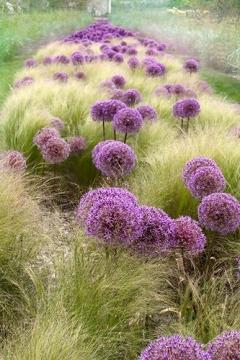
I’m always interested in the actual plants, of course, but I think it’s interesting and worth noting how they grow the way they grow. Most interesting cultivars or varieties of ornamental plants are discovered by unusual growth called “sports,” originate from a “witch’s broom,” involve unique traits on a seedling, hybrid or plant breeding resulting in polyploidism (bigger flowers, bigger fruit, but often brings sterility and cross fertilization incompatibility). However those unique traits are found, they are generally cloned (vegetative cuttings) and grafted onto more stable roots.
Of course there are always unique ways of pruning plants into topiaries as well, but let’s get into the plants.
If you’re looking all for a weeping tree, there are lots of choices. For starters, the redbud is a great plant for our region. You can’t go wrong with dark pink flowers in the spring and large, glossy, heart-shaped leaves in the summer. Add a weeping feature and you’re in business. Popular weeping cultivars of redbud (Cercis canadensis)( are ‘Lavender Twist’ and ‘Ruby Falls.’ The latter has red/purple leaves in the summer.
Other deciduous weeping trees include Japanese Maple (Acer palmatum ‘Ryussen’), Mimosa (Albizia julibrissin ‘Pendula’), River Birch (Betula nigra ‘Summer Cascade’), European Hornbeam (Carpinus betulus ‘Pendula’), and Baldcypress (Taxodium distichum ‘Cascade Falls’ or ‘Falling Water’) just to name a few. Evergreen weeping plants can range from our native Eastern Redcedar (Juniperus virginiana ‘Pendula’) to Cedar of Lebanon (Cedrus libani ‘Pendula’) and Atlas Cedar (Cedrus atlantica ‘Glauca Pendula’).
How about splendiferous plants with contorted stems and leaves? Corkscrew Willow (Salix matsudana ‘Tortuosa’) is a wonderful deciduous tree that fits the description. It’s just fascinating to look at all of the curly branches and stems. But this is a willow and it needs to be planted a good distance from your house and any water features. The roots of willow can be fairly invasive when looking for water sources.
In the shrub category, there is Harry Lauder’s Walkingstick (Corylus avellana ‘Contorta’). This is a fantastic plant for winter interest. In the summer it can be difficult to notice the uniquely contorted stems when the leaves cover the plant, but it’s a great specimen to bring some Dr. Seuss to leafless days. In the annuals category, a great plant for container gardens is Soft Rush (Juncus effusus). With cultivars like ‘Curly Wurly’, ‘Spiralis’ and ‘Unicorn’ you can be assured that someone will ask you about it.
How about pom pom type growth? Allium bulbs are great for this effect. They send up a single stalk with a round inflorescence at the top in spring and summer. There are many types with features ranging from size of the inflorescence, height of the stalk and color (purple to white). Smaller annual plants like Gomphrena have pom pom type inflorescences that are smaller, but more prolific. Great for containers or flower beds!
These plants are mostly what I’d call “specimen” plants and may be more difficult to find in the nursery than others. You may have to special order or mail order some of them, but they’re available. Hunting for plants for your Dr. Seuss plant collection or garden might just be the fun endeavor you’ve been looking for lately. (Cheryl Boyer)
“Be grateful you’re not in the forest in France
Where the average young person just hasn’t a chance
To escape from the perilous pants eating plants
But your pants are safe, you’re a fortunate guy
You ought to be shouting how lucky am I”
― Dr. Seuss, Did I Ever Tell You How Lucky You Are?
Pests:
Chiggers
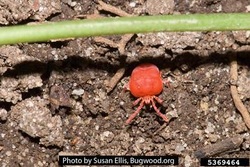
Though the bright red female adult is tiny (about 1/20th of an inch) the larva is much smaller (about 1/150th of an inch). Only the larvae are parasitic and attack animals. The larva injects digestive juices into the skin, which causes a rapid swelling. In the center of the swelling is a "feeding tube" from which the chigger sucks out liquefied skin cells. Feeding usually continues for 2 to 4 days.
Protection from chiggers uses two approaches. The use of a repellent can discourage chiggers from attacking. The most effective repellents are Deet and permethrin. Both are applied to clothing. The second approach seeks to reduce chigger populations. Keeping the lawn mowed regularly can help, but large populations may require the use of an acaricide. Effective products include bifenthrin (Talstar, Hi-Yield Bug Blaster II, Hi-Yield Bug Blaster Bifenthrin, and Ortho Lawn Insect Killer Granules), cyfluthrin (Tempo 20, Bayer Vegetable & Garden Insect Spray) and carbaryl (Sevin). For more information, see the K- State Research and Extension publication titled, “Chiggers” at: http://www.ksre.ksu.edu/bookstore/pubs/MF2107.PDF (Ward Upham)
Miscellaneous:
New Publications Available
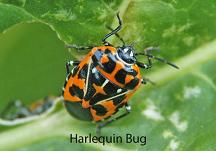
Harlequin Bug (MF3135) - A destructive pest of vegetable crops, especially the cole crops such as broccoli, cabbage and cauliflower.
Japanese Beetle (MF3151) - Though this insect became established in Kansas in 1992, it remained confined to certain areas of the state for a number of years. However, populations have been increasing and new areas are becoming infested. Japanese beetle has a very wide host range (reportedly 300 to 400 plant species) including many vegetables, fruits and ornamentals.
Spotted Wing Drosophila (MF3158) - First detected in Kansas in 2013, this pest of fruit can attack a wide variety of small fruit including blackberries, blueberries, boysenberries, raspberries, strawberries, and grapes. Raspberries appear to be more susceptible than blackberries, blueberries, and strawberries. Tree fruit such as apples, cherries, figs, nectarines, peaches, persimmons, and plums can also be attacked.
Tree and Shrub Problems in Kansas: Diseases, Insects, and Environmental Stresses (MF3132) - We have mentioned this one before but wanted to highlight it again as it is a very valuable resource. This is a 92-page publication with 116 color images to help with identification. (Ward Upham)
Stinkhorn Mushrooms
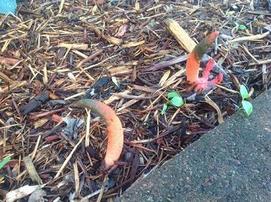
Stinkhorn mushrooms live on dead organic matter such as is found in mulched areas (especially bark mulch), fields or in yards. The finger-like fruiting body arises from a sac-like structure at the base. A slimy spore mass eventually develops at the tip of the stalk. It is the spore mass that causes the odor. This spore mass also attracts flies which help spread the spores to new areas.
The question always comes up on how to prevent or control these mushrooms. Since the main part of the fungus, the mycelium, is underground there isn’t anything you can do but remove the mushrooms as they appear. Remember the mushroom is the fruiting body of the mushroom and it is the mycelium that must be controlled to prevent the mushrooms. (Ward Upham)
Contributors: Cheryl Boyer, Nursery Crops Specialist; Ward Upham, Extension Associate
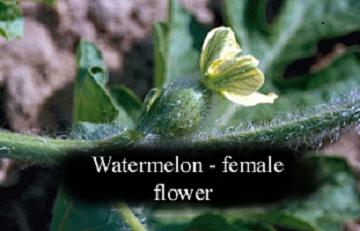
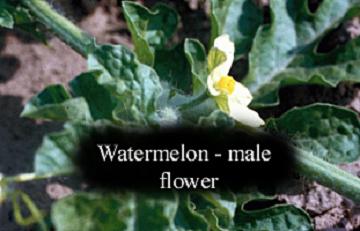
 RSS Feed
RSS Feed
